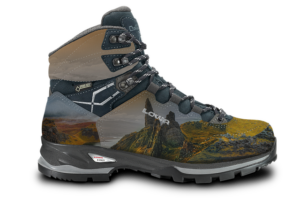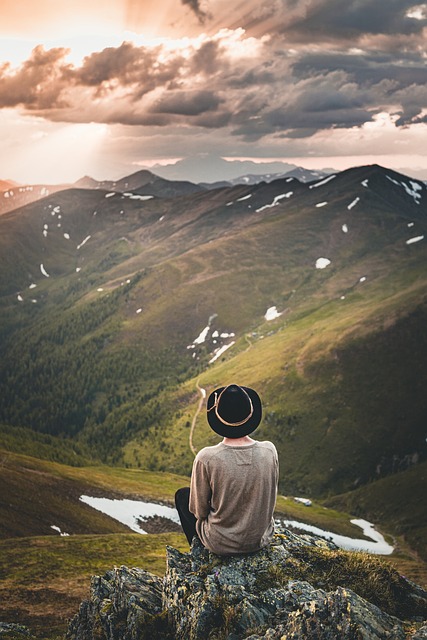
When venturing onto steep mountain trails under the cloak of darkness, the right flashlight becomes an indispensable ally. This article sheds light on the critical role high-quality hiking lights play in ensuring a safe and effective climb. We’ll explore key characteristics that distinguish flashlights for hiking trails from standard models, focusing on battery longevity, lumens output, durability, and protection against the elements. Additionally, we’ll compare LED technology with other light sources to determine which provides the most reliable illumination. Lastly, we’ll offer practical advice on using your flashlight efficiently over extended hikes on challenging trails. Whether you’re a seasoned mountaineer or an aspiring trailblazer, understanding these aspects of flashlights for hiking trails will elevate your climbing experience.
- Understanding the Importance of Quality Flashlights for Hiking Trails on Steep Mountain Terrain
- Key Features to Look for in a Flashlight Tailored for Mountain Trail Climbs
- Battery Life and Lumens Output: Maximizing Visibility on Your Ascent
- Durability and Impact Resistance: Ensuring Your Flashlight Can Withstand the Rigors of Mountainous Terrain
- Waterproof and Dust-Proof Ratings: Protecting Your Light Source from the Elements
- LED Technology vs. Other Light Sources for Effective Trail Illumination
- Strategies for Efficient Use of Flashlights During Long Hikes on Steep Trails
Understanding the Importance of Quality Flashlights for Hiking Trails on Steep Mountain Terrain
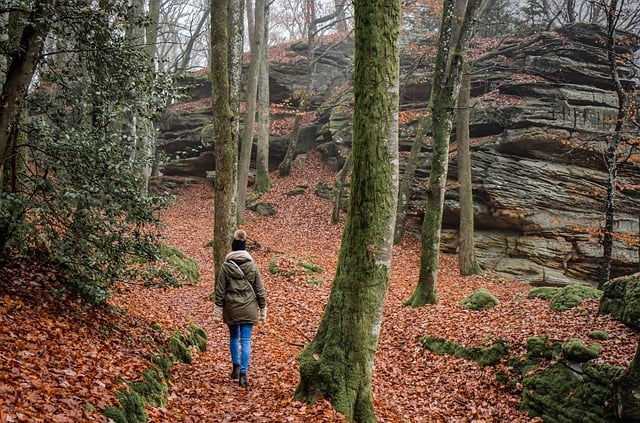
When venturing into the rugged terrain of steep mountain trails, the reliability of your lighting source can be a matter of safety and success in your hiking endeavors. A high-quality flashlight for hiking trails is not just a convenience; it’s an indispensable tool for navigating the unpredictable conditions that such environments present. The intensity and beam pattern of a dependable flashlight can significantly enhance visibility, especially when traversing uneven surfaces under the cover of darkness or during inclement weather when natural light is scarce.
Durability is another critical aspect to consider in a flashlight for hiking trails on steep mountain terrain. The harsh environment poses a risk of impact against rocks or accidental drops, which could compromise less sturdy models. A robust construction and water-resistant design ensure that the flashlight remains operational when you need it most. Additionally, features such as adjustable brightness settings are beneficial for conserving battery life during longer excursions. This adaptability is crucial as it allows hikers to extend their use without the worry of being left in darkness due to a depleted power source. Selecting a flashlight specifically designed for hiking trails with steep mountain climbs ensures that you have a reliable partner to light your way, making the journey safer and more enjoyable.
Key Features to Look for in a Flashlight Tailored for Mountain Trail Climbs
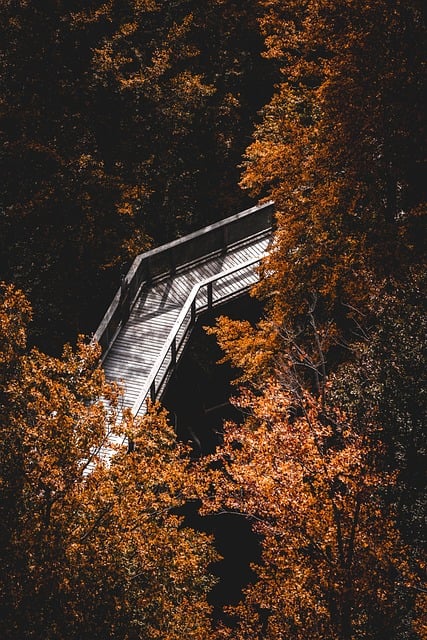
When venturing into the unpredictable environments of steep mountain trails, the reliability of a flashlight becomes paramount. A high-quality flashlight for hiking trails can be the difference between a safe return and an unnecessary ordeal. The best flashlights for these conditions are characterized by their durability, battery life, and versatility. A robust construction ensures the light can withstand the rigors of mountain travel without failing when you most need it. Look for a flashlight that is made from high-impact resistant materials such as aircraft-grade aluminum or polycarbonate, which are both lightweight yet strong enough to handle falls or accidental drops.
Battery life is another critical feature; consider models with long-lasting rechargeable batteries or energy-efficient LED technology that provides bright, focused beams for extended periods. The ability to adjust the intensity of the beam allows users to conserve battery life during less demanding moments and maximize it when navigating particularly challenging stretches of the trail. Additionally, a flashlight with multiple lighting modes—including red, green, or blue night vision settings—can preserve your night adaptation while enhancing your visibility in various conditions. Water resistance is also a must-have feature for mountain trails, as unexpected weather changes can render an otherwise reliable light useless. Ensure that the flashlight you choose has an appropriate IP rating to protect against moisture and water submersion, ensuring safe illumination regardless of the weather. With these features in mind, your flashlight for hiking trails will be a reliable companion on your next mountain adventure.
Battery Life and Lumens Output: Maximizing Visibility on Your Ascent
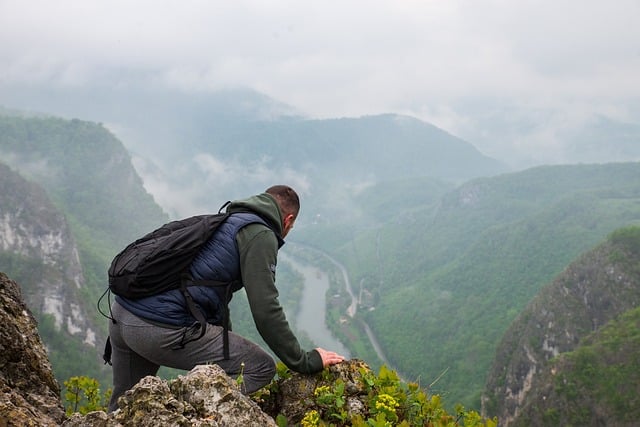
When embarking on a steep mountain trail climb, the reliability of your flashlight becomes paramount, especially when navigating through uneven terrain under the cover of darkness. The intensity and reach of your light source directly correlate with your safety and efficiency during such expeditions. Battery life is a critical factor to consider for flashlights designed for hiking trails. A high-quality flashlight with an extended battery life can mean the difference between a successful ascent and an unplanned bivouac. Opt for flashlights that offer user-replaceable batteries, which provide a contingency plan in case of power depletion. Additionally, the lumens output of your flashlight significantly impacts visibility. A bright beam of at least 1000 lumens is often recommended to illuminate long distances and complex trail features, ensuring you can identify obstacles, irregularities, or potential dangers on the path ahead. However, for preserving battery life, it’s advisable to adjust the lumens output as needed; many flashlights for hiking trails come with settings that allow users to switch between various intensities, from a bright maximum to a dimmer, more energy-efficient mode for when full illumination isn’t necessary. Considering both battery longevity and optimal lumens output will enhance your visibility during the ascent and descent, making your mountain trail adventure safer and more enjoyable.
Durability and Impact Resistance: Ensuring Your Flashlight Can Withstand the Rigors of Mountainous Terrain

When venturing onto steep mountain trails, the reliability and durability of your flashlight are paramount. The unforgiving terrain can subject your lighting tool to significant impacts and harsh environmental conditions. A high-quality flashlight designed specifically for hiking trails must possess impact resistance to withstand accidental drops or bumps against jagged rocks and roots. Constructed from robust materials such as aircraft-grade aluminum or reinforced polymer, these flashlights are built to endure the rigors of mountain climbing without failing when you need them most. Additionally, their design often includes a tempered glass lens or a nearly indestructible polycarbonate lens, which provides clear visibility while safeguarding against the impacts that can occur on such trails. Flashlights for hiking trails are typically waterproof as well, ensuring that moisture from unexpected weather changes or river crossings won’t compromise their functionality or your safety. Opting for a flashlight with an IPX rating of at least 8 can guarantee this level of protection against water submersion and other liquid intrusions. The combination of high impact resistance, durable construction, and waterproof capabilities ensures that your flashlight remains a dependable companion throughout your mountain trail adventures.
Waterproof and Dust-Proof Ratings: Protecting Your Light Source from the Elements
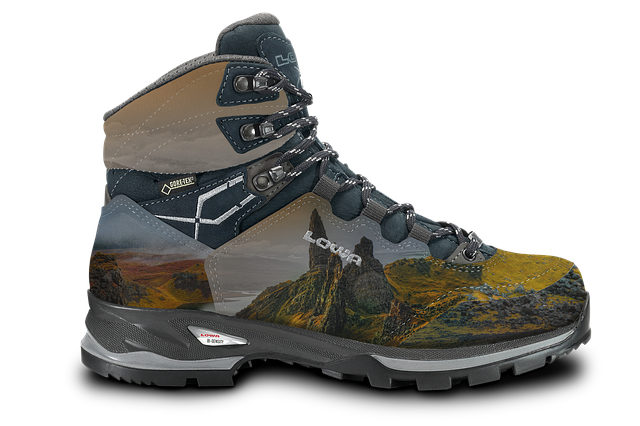
When venturing into the unpredictable terrain of steep mountain trails, it’s imperative to equip yourself with a reliable flashlight that can endure harsh weather conditions. Flashlights for hiking trails must be waterproof and dust-resistant to maintain functionality when navigating through rain or sandstorms. The International Protection (IP) rating system is a crucial guideline to assess the level of protection your flashlight will offer. An IP67 rated flashlight, for instance, indicates it can withstand complete immersion in water up to 1 meter for 30 minutes without any moisture intrusion. Additionally, this rating suggests it’s also protected against fine dust particles that may compromise its performance.
For hikers who frequently traverse these demanding trails, understanding the nuances of waterproof and dust-proof ratings is essential. A flashlight with an IP68 rating offers even greater protection, allowing for continuous immersion in water over 1 meter deep. This level of protection ensures that your light source remains operational, illuminating your path during unexpected weather changes or when you’re navigating through rocky crevices where dust is prevalent. Flashlights For Hiking Trails designed with these high-level IP ratings are indispensable tools for any serious outdoor enthusiast, providing peace of mind and ensuring that your journey through nature’s challenging environments remains both safe and enjoyable.
LED Technology vs. Other Light Sources for Effective Trail Illumination

Strategies for Efficient Use of Flashlights During Long Hikes on Steep Trails
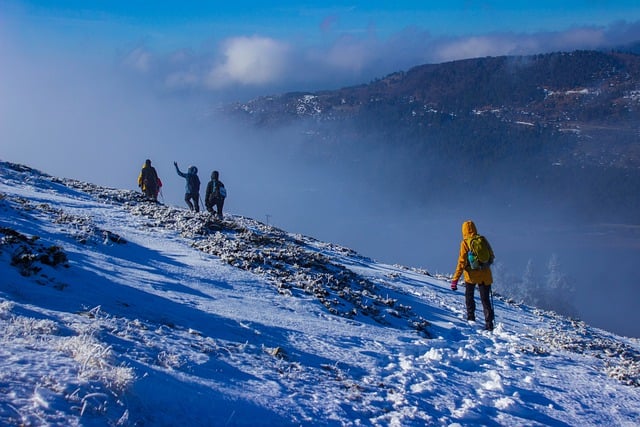
When venturing into the steep, unpredictable terrain of mountain trails, having a reliable flashlight is not just a convenience—it’s an integral part of your safety gear. A high-quality flashlight for hiking trails, with its superior brightness, long-lasting battery life, and robust construction, becomes your steadfast companion, ensuring visibility and protection against the elements. As this article has outlined, the best flashlights for hiking trails are equipped with LED technology, boast waterproof and dust-proof capabilities, and offer high lumens output to brighten your path through the darkest ascents. With the right strategies in hand for efficient use, these lights serve as a beacon, guiding you safely to your destination. Investing in a flashlight tailored specifically for mountain trail climbs is an essential step towards ensuring a secure and enjoyable hiking experience.
